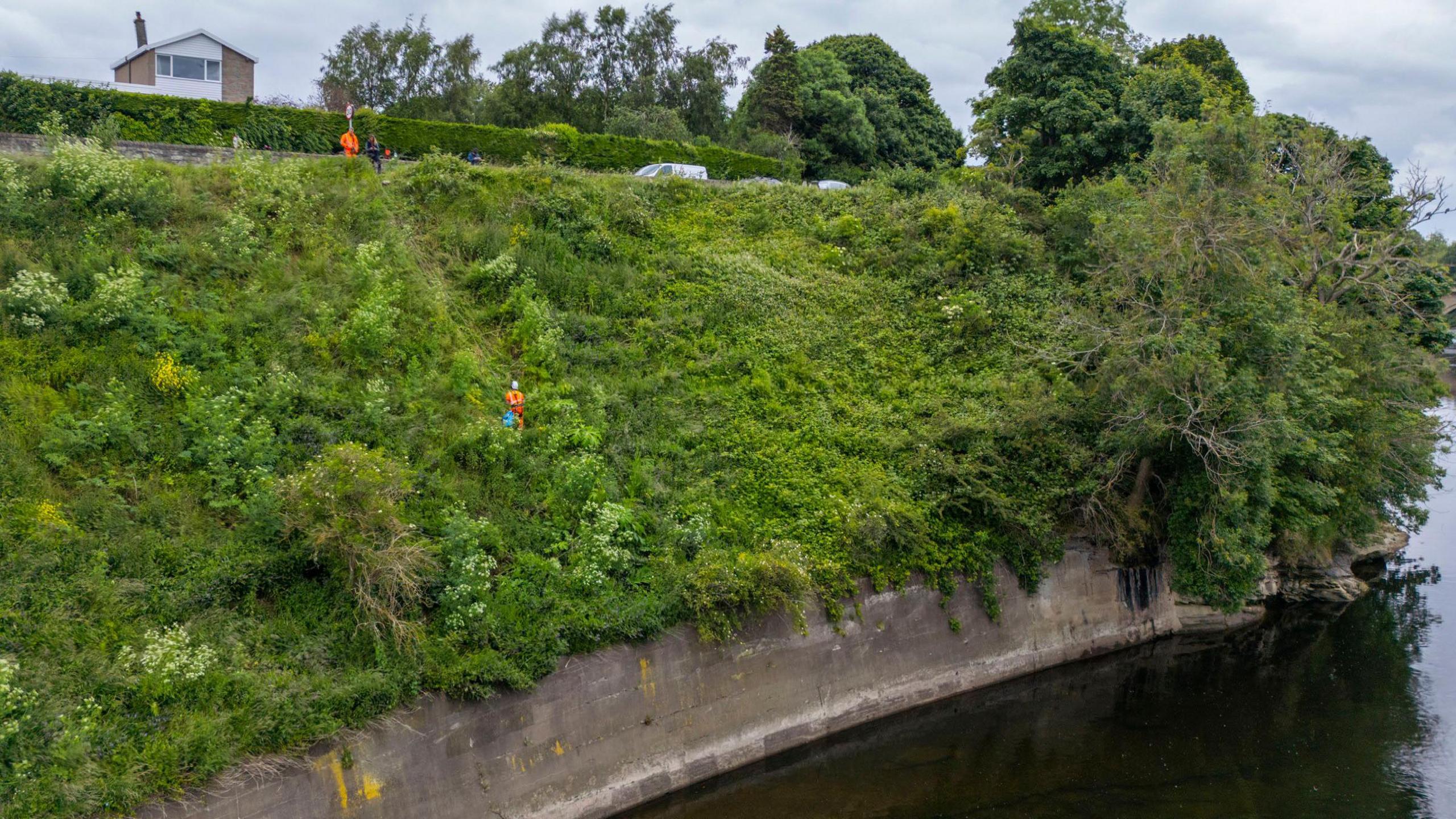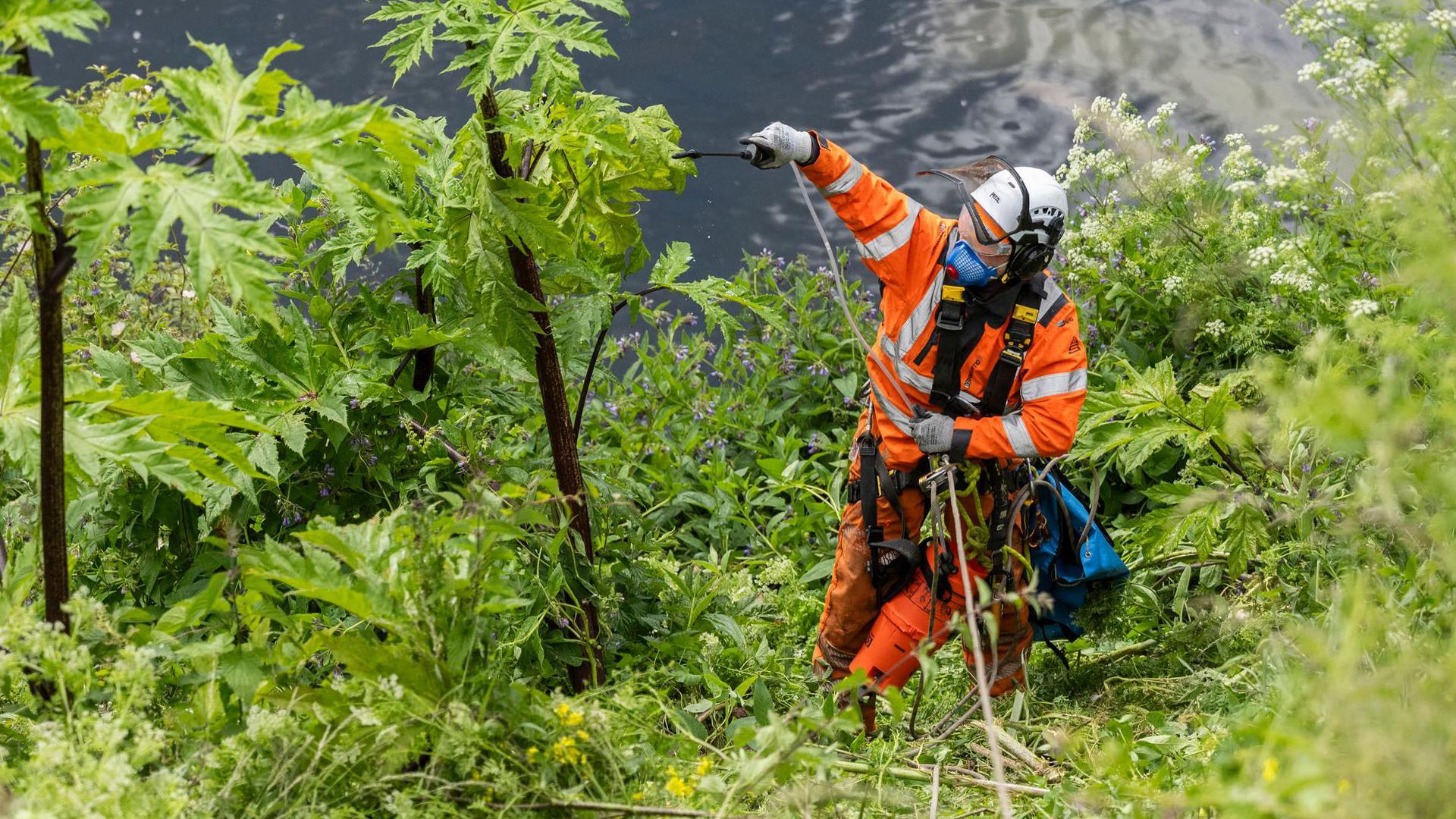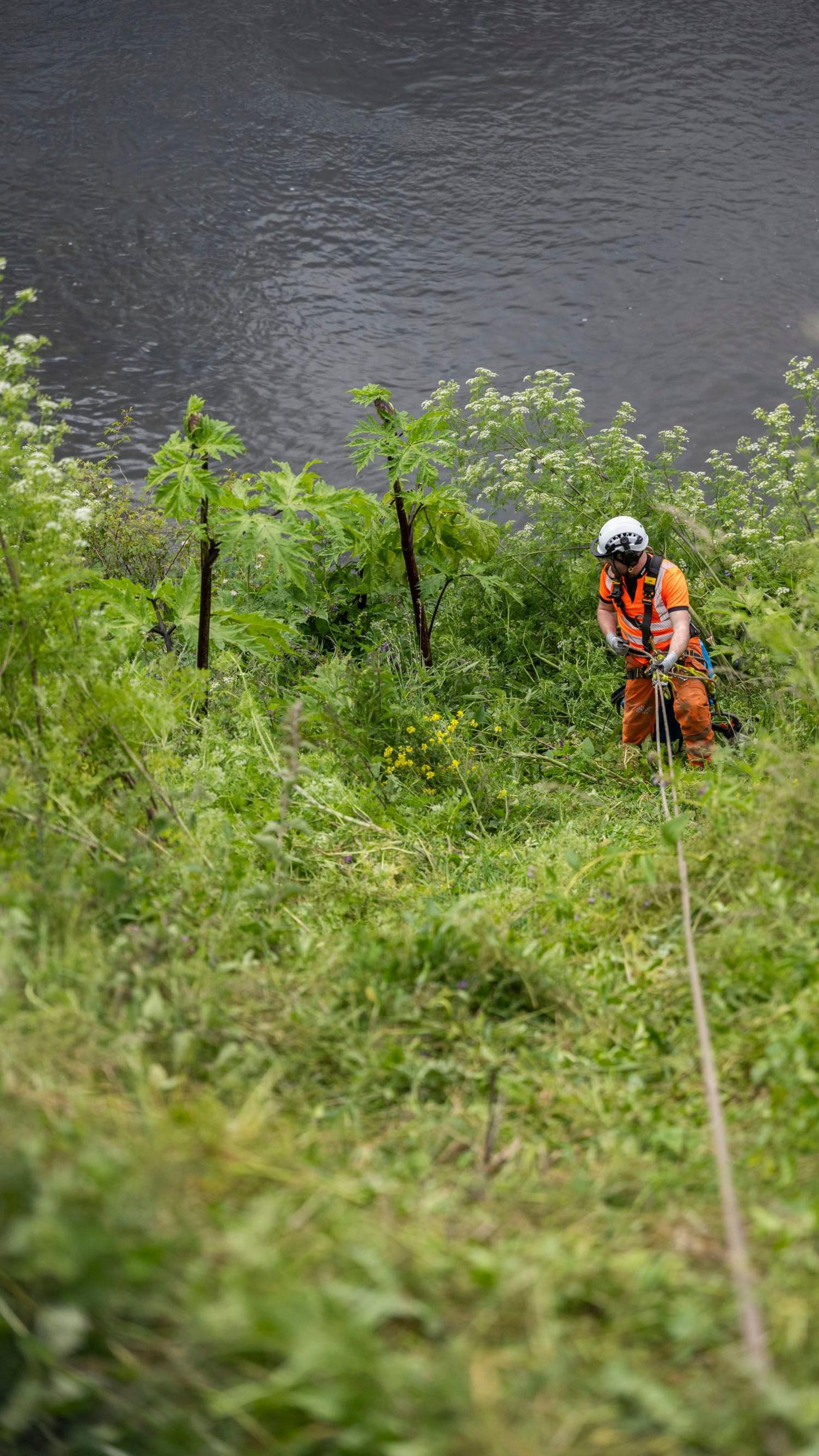Abseilers drop in to tackle river's giant hogweed

Some banks of the River Tweed are particularly hard to access
- Published
A team of specialist abseilers has been helping to tackle an invasive non-native plant on the banks of the River Tweed.
It is part of efforts to reduce the density and abundance of giant hogweed in the area.
Toxic sap from the plant can cause severe burns and blistering and the river acts as a transport network for its seeds.
The Tweed Forum has brought in specialist contractors to help control the hogweed in areas which are more difficult to access.
The forum's invasive species project officer Emily Iles said giant hogweed had been introduced to the UK by Victorian plant collectors who added it to their exotic botanical collections.
However, she said they had not realised the problems it would cause when it "inevitably escaped from these cultivated collections".
"The river network is an ideal transportation network for giant hogweed with each plant able to produce between 20,000 and 50,000 seeds which can remain dormant in the soil for many years," she explained.
"Despite the challenging nature of this particular plant, our two decades of giant hogweed control have greatly reduced plant numbers on the main stem of the River Tweed.
"Our trained volunteers and contractors do the majority of work tackling the plants, but we do occasionally have to call on specialist help like these abseilers for hard-to-reach areas."

Giant hogweed is one of a number of invasive species being tackled along the river
The experts - from SAS Rope & Rail - recently assisted on a stretch of the river near Coldstream.
Giant hogweed is not the only plant that the Tweed Forum's invasive project is battling to reduce with Himalayan balsam, Japanese knotweed and American skunk cabbage also targeted.
The group said the plants could cause riverbank erosion and increased flood-risk and threaten the area’s native biodiversity - including destroying spawning and nursery habitat for salmonid fish species.
The invasive species work is part of the wider £25m Destination Tweed revitalisation project which includes the creation of a 113-mile source-to-sea trail.

Abseilers were able to access the steep banks near Coldstream
Get in touch
What stories would you like BBC News to cover from the south of Scotland?
Related topics
- Published3 October 2022
